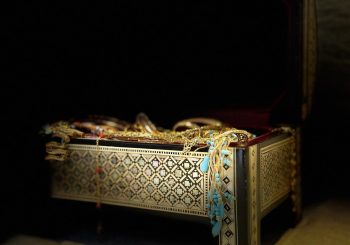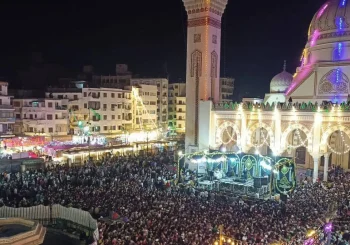If you would look at the landscape of Egypt from a bird’s eye view, you would see something akin to chaos; scattered clusters of houses, uneven distribution of open spaces intertwined with small neighborhoods, and communities sprinkled here and there over the country’s territory. However, Egypt’s immense space that houses about 94 million people is in the midst of this seemingly chaotic reality where endless stories of people, culture, tradition, history and heritage live.
A number of initiatives have been growing across the country’s governorates calling for beautifying cities and neighborhoods. Looking closer at these initiatives, their purpose stretches far beyond making cities more beautiful; they also aim to strengthen social cohesion among Egypt’s numerous and diverse communities.
Project of Happiness in Heissa Island, Nubia

A group of students at Misr International University (MIU) came up with a project idea in 2013 called ‘Project of Happiness‘ aimed at making cities look brighter by using colours. They started painting walls of unprivileged areas in Cairo in an attempt to create a healthy environment for students to enjoy their time at school, or at least making their commutes between their homes and schools more enjoyable.
‘Project of Happiness’ traveled to Heissa Island in Nubia where the group members managed to paint a total of 31 houses over a period of three years. They further aim to expand their effort and support women empowerment by developing their skills in handcrafts.
eL Seed Perception Project in Manshiyat Nasser neighborhood, known as ‘Garbage City’

Moving on to the Manshiyat Naser neighborhood, known to outsiders as ‘Garbage City’, is located close to downtown Cairo. Here, Tunisian-French artist eL Seed drew on no less than 50 buildings to celebrate the Egyptian capital’s trash collectors.
In eL Seed’s project “Perception”, he took his art to a new level and questioned the level of judgment and misconception society can unconsciously project upon a community because they are different.
“In the neighborhood of Manshiyat Nasr in Cairo, the Coptic community of Zaraeeb collects the trash of the city for decades and developed the most efficient and highly profitable recycling system on a global level. Still, the place is perceived as dirty, marginalized and segregated,” said eL Seed in a TED Talk about the project.
“To bring light on this community, with my team and the help of the local community, I created an anamorphic piece that covers almost 50 buildings only visible from a certain point of the Moqattam Mountain. The piece of art uses the words of Saint Athanasius of Alexandria, a Coptic Bishop from the 3rd century, that said: “Anyone who wants to see the sunlight clearly needs to wipe his eye first,” he added.
Manshiyat Naser neighborhood house people who are sometimes calles ‘al-Zabaleen,’ Arabic for trash collectors, which refers to people who are responsible for gathering and recycling the city’s garbage.
El-Borollos, northern Egypt’s Kafr el-Sheikh governorate

More initiatives took to the streets of el-Borollos village located in northern Egypt’s Kafr El-Sheikh governorate. The initiative started in the 2014 and soon turned into an annual event aimed at decorating the town’s houses by painting fishing boats with vibrant motives. The annual event brings artists from all around the world. In 2015, some 25 artists from 10 countries, including Bahrain, Jordan, Tunisia, Sudan and Portugal, participated in the event.
Kom al-Dikka, Alexandria

Located just next to the fashionable Foad Street, Alexandria’s Kom al-Dikka neighborhood is poor, but its inhabitants have nevertheless made some of the buildings a little bit more colorful by painting creative motives along their aged walls. From youth graffiti to flowers and geometric patterns, these compositions do not only make the area more colorful, but also bring out some of the inhabitants’ creativity as expressed in the area’s built structures.
Besides the above examples, more initiatives have been spreading across Cairo and other cities bringing joy and happiness to its residents.
Over the past few years, social media users witnessed the emergence of many painting initiatives such as Color Zone in Suez, Coloring a Grey City, Hanlwenha, Cairo Dish Painting Initiative and Mashrou al Saada.
Most of these initiatives were led by students interested in beautifying Egyptian cities by adding color and images to public space such as walls, staircases, infrastructure, or fences.
One of the most famous initiatives is called Cairo Dish Painting Initiative which focuses on “painting privately-owned objects such as satellite dishes and views painting as an opportunity for self-expression,” according to Tadamun.
Most painting initiatives are self-funded and they require authorization from government officials and residents on the areas where the project to be held.
Here is a map showing the areas where painting initiatives have been launched.








Comment (1)
[…] PERCEPTION, 2016 (SOURCE: https://egyptianstreets.com/2018/01/24/splashes-of-colour-turn-egyptian-neighborhoods-into-living-pi…😉 ELSEED, PERCEPTION, 2016, WIDOK Z GÓRY MOKATTAM (SOURCE: […]